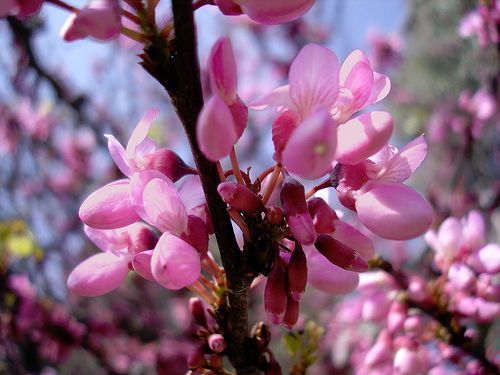
Judas Tree – Root and Branch Review
At the heart of the Judas tree is an ornamental flowering tree with rich, pink to red, pea shaped flowers in May followed by long pods.
Key Features of the Judas Tree
- Latin name – Cercis siliquastrum aka Flowering Judas or Love Tree
- Height – Ornamental tree up to 35 feet
- Type of tree – Deciduous
- Leaves – Kidney shaped, untoothed, smooth grey-green
- Flowers – Sweet pea-like magenta-pink
- Fruit – Flat brown pods
- Bark – Dark grey with ridges when mature
- Family – Fabaceae
Origins and Distribution of the Judas Tree
- Native to southern Europe, western Asia and possibly originating in Judea hence the name.
- Just about hardy for UK gardens.
Uses and Attributes of the Judas Tree
- Eye catching spring flowering ornamental tree.
- Flowers are edible in salads, fried in batter or pickled as a caper substitute.
- The wood is hard and fine grained making it suitable for veneer work
- A popular tree in parks and ornamental gardens.
Gardeners Tips for the Judas Tree
- The flowers arrive in spring before the leaves and also bloom from old wood and stems.
- Requires full sun and good drainage.
- This leguminous tree has decorative, long, purple pods
Other types of Judas Tree and key species
- Varieties include ‘Afghan Deep Purple’ ‘Bodnant’ and ‘Alba’ – white flowers and Carnea’.
- Other Cercis include Cercis canadensis (Redbud), Cercis chinensis heart shaped leaves and Cercis racemosa drooping flowers.
Judas Tree comments from elsewhere
- Top ten UK garden trees.
- The Judas tree appreciates a warm spot and is a star in May when the leafless branches are adorned with lilac/pink flowers. Grow your own from seeds in February or March.
- According to legend this is the tree on which Judas hanged himself after betraying Jesus. After Judas died the white flowers are said to have turned red with his blood and shame.
- Avoid anywhere too exposed as the stems are rather brittle
Credits
Judas Tree by Vassilis Online CC BY-SA 2.0 ‘Cercis siliquastrum, commonly known as Judas Tree, is a small deciduous tree from Southern Europe and Western Asia which is noted for its prolific display of deep-pink flowers in spring.’
Leaf of Japanese judas tree by Amehare CC BY-NC-ND 2.0
Cercis siliquastrum (I) -vainas- (Pods) by .Bambo CC BY-NC-SA 2.0
Judas Tree by Ava Babili CC BY-NC-ND 2.0
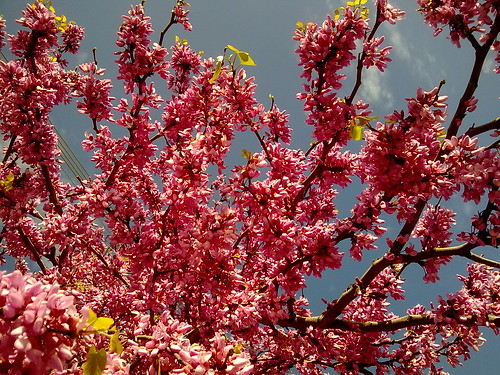
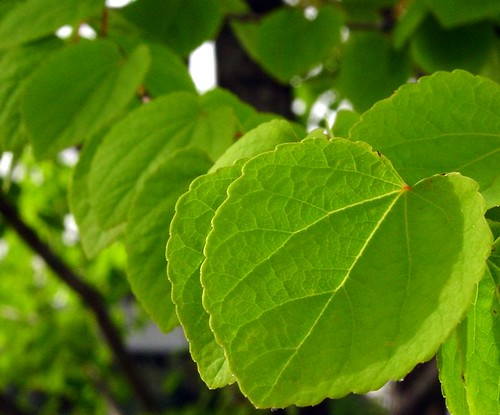
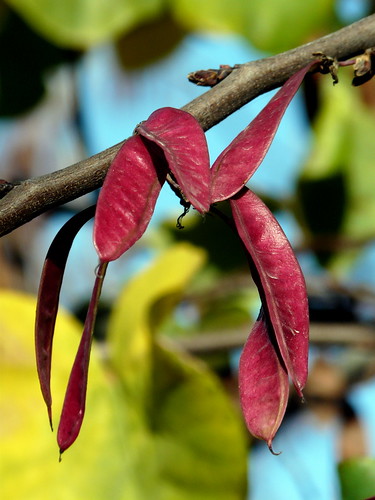
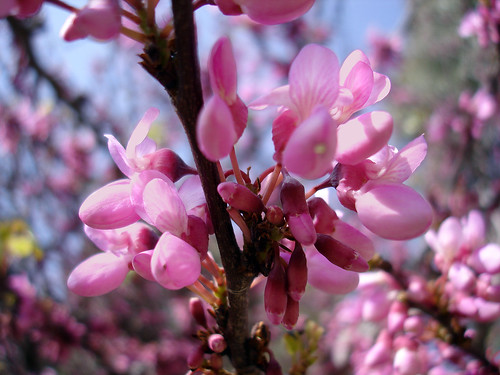
4 thoughts on “Judas Tree – Root and Branch Review”
Are the riots invasive? I found a volunteer only 3 ft from the house wall.
Their roots. Auto spell gets me sorry
Not as far as I know. 3 Feet seems a a safe distance as they do not take up copious amounts of water.
How deep is the root system? I have a HUGE tree in front of house I am building and don’t want to do anything more that prune it some. But am needing to know before placing a sprinkler system in.
Comments are closed.